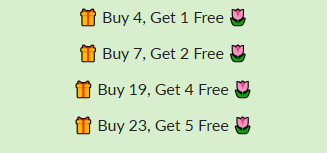Frequently Bought Together
DESCRIPTION
Description
SuperBlue PPAF has brightly colored flowers that are deep blue-purple, and slender leaves that give it an attractive overall appearance. It is not only suitable for garden viewing, but can also be used to make spices and fragrances to add interest to life. SuperBlue PPAF grows vigorously and is highly adaptable, able to thrive in sunny environments, making it an ideal choice for home gardening.
Details of Lavender, SuperBlue PPAF
| Name | Lavender, SuperBlue PPAF |
| Botanical name: | Lavandula angustifolia |
| Colors: | Dark blue-purple |
| Maturity: | Approximately 90 days |
| Life Cycle: | Perennial |
| Plant Height: | 12-18 inches |
| Plant Spacing: | 12-18 inches |
| Hardiness zones: | 5-9 |
| Features: | Bright colors, long-lasting bloom |
| Uses: | Ornamental, fragrance |

WHY CHOOSE US?
Our flower and vegetable Seeds world has been in business for more than eieght years, and we have always put the quality of our products first since we started our business. Over the years, we have provided the best quality goods to tens of thousands of customers all over the world. Customer satisfaction gives us confidence that we made the right choice. The seeds we sell go through multiple levels of quality checks before being carefully packaged and sent to customers. Our products have obtained a number of certificates and meet the highest quality standards of the European Union. Our experienced staff is happy to answer your every question. Where do our seeds come from? The seeds sold in our store come from the best producers in the European Union. Long-term relationships with our partners ensure appropriate storage and distribution practices, ensuring that our customers receive fresh and inspected seeds. Communicate directly with the manufacturer to avoid seed expiration and ensure good quality and reasonable price. Product Quality Control Four-level quality inspection system for seeds Level one involves screening and selection of suppliers and initial inspection of commodities. Domestic and foreign suppliers must go through the same quality checks. The three growth stages of flower germination, flowering and fruiting are all observed and tested. During the first stage of inspection, spacing of plants is crucial to ensure that mature flower seeds have the desired morphological characteristics such as color, height, shape, etc. Level two involves seed testing. In laboratories with state-of-the-art equipment, the seeds are tested by professionals, with more than 30,000 quality checks per year. If the seed inspection is unqualified, technical refinement and improvement must be used, including procedures such as drying, cleaning, upgrading and re-inspection. Level three involves experimental sowing, carried out on selected plots of land. This stage allows us to understand the specific situation of flower germination, because germination needs to be maintained at a certain level. At the same time, it is possible to check the variety to which each plant belongs and its characteristics.
OUR GUARANTEE
First:📦 Insured Worldwide Shipping: Each order includes real-time tracking details and insurance coverage in the unlikely event that a package gets lost or stolen in transit.
Second:💰 Money-Back Guarantee: If you have any quality problems with the product within 30 days of purchase, we will gladly issue out a replacement or refund.
Third:✉️ Customer Support: We have a team of live reps ready to help and answer any questions you have within a 8-hour time frame, 5 days a week.
Fourth:🔒 Safe & Secure Checkouts: We use state-of-the-art SSL Secure encryption to keep your personal and financial information 100% protected.
Every shopping experience is a new experience full of expectations. If there are any problems with the seeds you received or the logistics process, please contact us by email first. We promise to follow up and handle it for you as soon as possible: whether you need to resend the goods or want a refund service, we will respond as quickly as possible. Your satisfaction is our primary pursuit!
Second:💰 Money-Back Guarantee: If you have any quality problems with the product within 30 days of purchase, we will gladly issue out a replacement or refund.
Third:✉️ Customer Support: We have a team of live reps ready to help and answer any questions you have within a 8-hour time frame, 5 days a week.
Fourth:🔒 Safe & Secure Checkouts: We use state-of-the-art SSL Secure encryption to keep your personal and financial information 100% protected.
Every shopping experience is a new experience full of expectations. If there are any problems with the seeds you received or the logistics process, please contact us by email first. We promise to follow up and handle it for you as soon as possible: whether you need to resend the goods or want a refund service, we will respond as quickly as possible. Your satisfaction is our primary pursuit!

Lavender, Super Blue PPAF
$4.75









